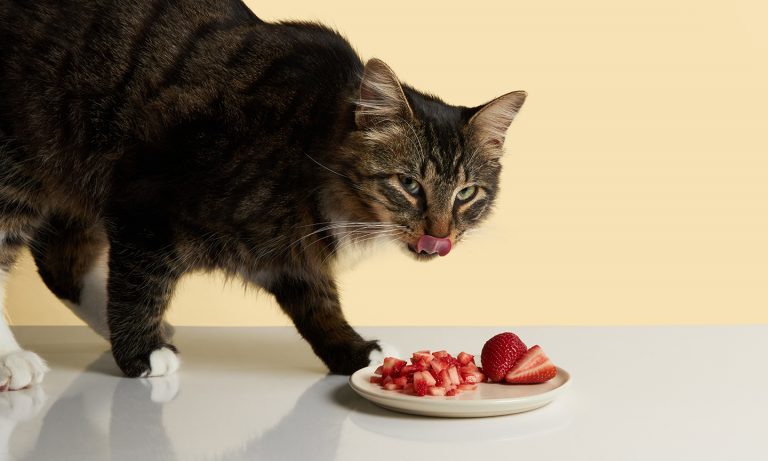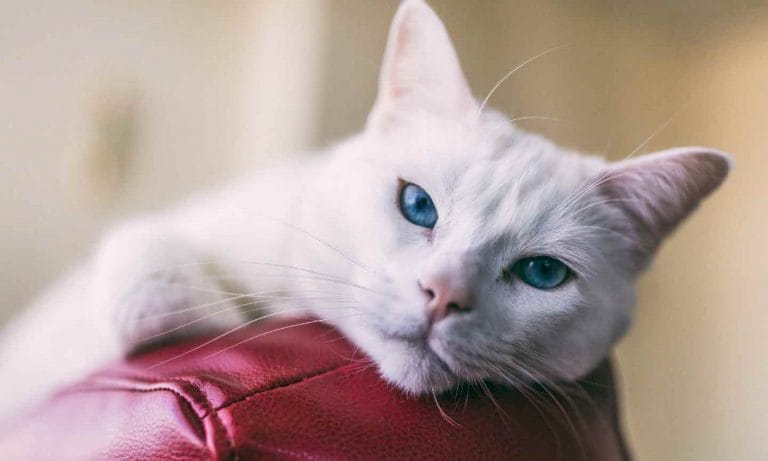If you have a feline friend, chances are you’ve discovered her affinity for catnip. This mysterious kitty kryptonite can be found in everything from cat treats to interactive cat toys. Despite its popularity with cats worldwide, many pet parents know little about catnip, where it comes from and its associated benefits.
Nepeta Cataria: Code Name Catnip
Catnip is derived from a plant called nepeta cataria. As a member of the mint family, nepeta cataria has a pleasant smell that cats are naturally attracted to. This herb-like plant is native to southern and Eastern Europe, the Middle East, Central Asia and parts of China. Also known as catmint, the catnip plant contains a chemical compound called nepetalactone in its leaves and stems. It’s this compound that attracts cats and affects their cat behavior.
While many cats have physical reactions to catnip, not all cats are susceptible to its alluring properties. Sensitivity to catnip is an inherited trait. As few as one in two or one in three cats has the inherited trait, and those that do not carry it seem to be immune to catnip’s many benefits.
Effects, Benefits and Warnings
When sniffed, nepetalactone is a stimulant that produces a “high” that lasts about 10 minutes before wearing off. Stimulation can lead to increased exercise and play, which keeps your cat in shape, physically and mentally. When eaten in moderation, catnip works as a sedative, calming your cat and reducing stress. Catnip’s calming properties are especially beneficial introducing your cat to situations where she may suffer from increased anxiety. Natural dried catnip has high concentrations of catnip oil, so feeding your feline a bit of catnip before traveling can reduce symptoms of stress and anxiety.
According to Dr. Gayle Sternefeld, veterinarian at the Cat Hospital at Townson in Baltimore, unlike some drugs, there seem to be no addictive qualities to catnip. However, cats that are exposed to catnip daily may lose their sensitivity to it and become less attracted to it. When it comes to dosage, Dr. Sternefeld advises, “A little bit, a little at a time, just as a special treat, is probably the best place to go with it.”
Cats can have different reactions to catnip, if any at all. While veterinarian Stephanie Liff doesn’t use catnip at her Pure Paws Veterinary Clinic, she has clients who do and see variable effects. Catnip is non-toxic, but it has been known to cause stomach upset in cats. You should refrain from giving your feline catnip if it leads to diarrhea or nausea.
Types of Catnip
Catnip is used in a variety of pet products for its ability to both excite and relax cats. You can sprinkle all-natural dried catnip into your cat’s food for a calming effect that lasts anywhere from 5-15 minutes. For more essential catnip oil, look for natural catnip made from premium leaf and flower cuts. Catnip oil can also be bottled and packaged in a convenient spray that you can use on your cat’s toys to excite and motivate play. You can also use catnip oil when training cats to scratch on places other than your rug or sheets. There are even compressed catnip toys and catnip bubbles for your kitty’s amusement.
Catnip is a non-toxic, natural way to motivate your cat to play and get the exercise she needs to maintain a healthy weight. When digested, the natural properties of the catnip plant can help calm and reduce anxiety in your stressed kitty. With its many benefits, it’s no wonder why cats go crazy for catnip.
Share:












